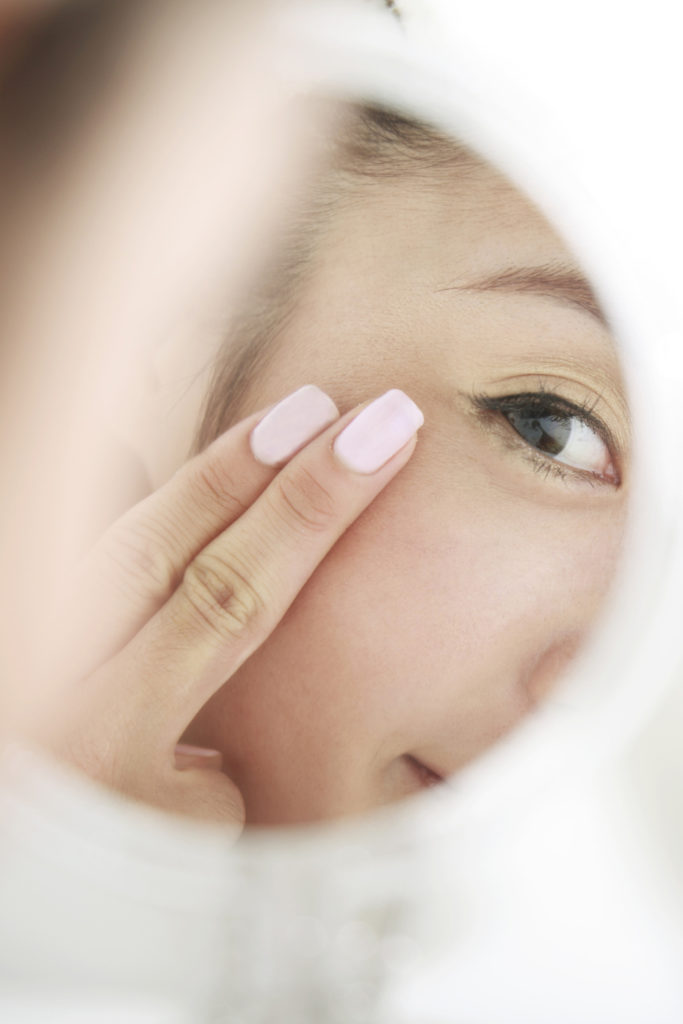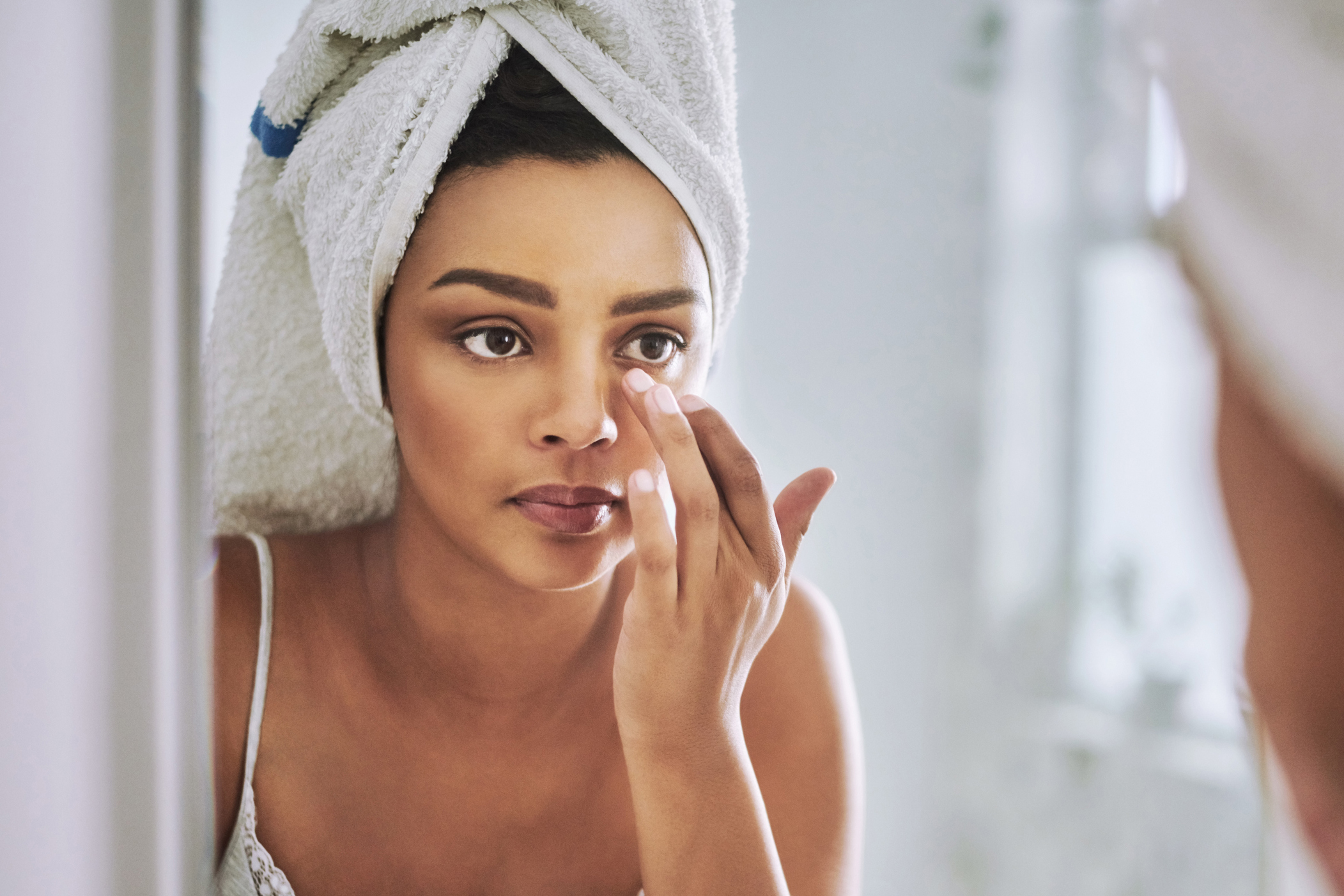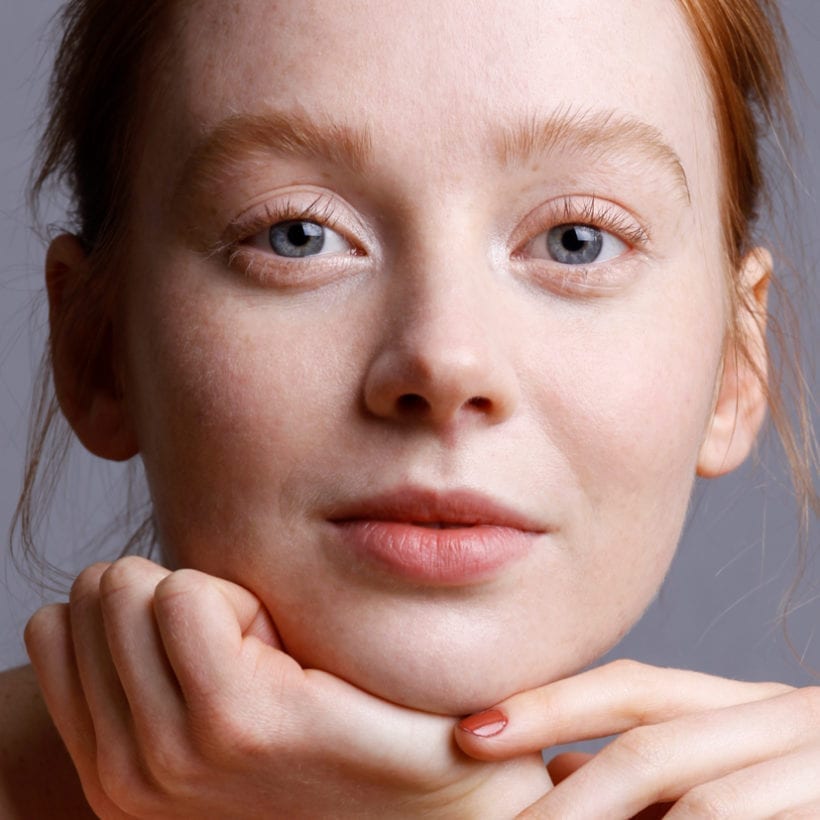One of my favorite Irish proverbs is, “Do not resent growing old, many are denied the privilege.” Every day is a gift, and we’re lucky to be going through the aging process, even if we aren’t super psyched about those eye lines and wrinkles that seemed to appear overnight. That being said, it’s okay to feel grateful for life while also wanting to soften up your under-eye smile lines a bit. Below, we asked multiple experts about all the ways you can reduce and prevent eye lines and wrinkles, from the incredible modern technology to ancient practices that have been used for centuries.
In-office laser treatments
If you’re looking for speedy results to zap away eye lines and wrinkles effectively and fast, investing in an in-office laser treatment (or a few) is a great way to treat this area. Some in-office treatments that can help treat under-eye wrinkles are a combination of radiofrequency and resurfacing laser therapies, including Thermage, Fractora, Fraxel, and DEKA/CoolPeel. “Thermage is a non-invasive radiofrequency (RF) heating and cooling treatment used to tighten and lift the skin and reduce fine lines and wrinkles,” explains Diana Palmisano, PA-C, a licensed aesthetic practitioner at Tribeca Skin Solutions in NYC. “It stimulates collagen production and has no downtime.”
Fraxel is a non-ablative, fractional resurfacing treatment that improves tone, texture, fine lines and wrinkles, and radiance for aging. “Another laser, called Fractora, is a resurfacing treatment that uses Fractionated RF (radio frequency) and microneedling to address fine lines, wrinkles, and other signs of aging skin,” says Laura Palmisano, PA-C, also a licensed aesthetic practitioner at Tribeca Skin Solutions. “DEKA/CoolPeel is a CO2 ablative resurfacing laser that also helps to reduce the appearance of fine lines and wrinkles by targeting the superficial layer of skin — the damaged skin is removed, revealing younger and healthier-looking skin.”
Botox
Botox treatment is ideal for those with crow’s feet, as these lines are formed from the muscle contraction, while Botox works to weaken the muscle’s ability to contract. “Botox can also help with under-eye wrinkles via an indirect mechanism of action of widening the eye and stretching the lower eyelid skin,” explains Dr. Kenneth Mark, MD, a board-certified dermatologist in NYC. “However, lower eyelid wrinkles are due more to skin laxity than from muscle movement. Consequently, for lower eyelids, I prefer [a fractional laser] or fillers, especially for tear trough atrophy.”
If you are opting for Botox in the undereye area, know that the treatment usually lasts about four months, and you will need to go into your dermatologist’s office routinely to treat the area.
Microneedling
An in-office microneedling treatment can help reduce under-eye lines and wrinkles. “We recommend this treatment for superficial fine lines,” explains Diana. “The pinpricks from microneedling cause micro-injuries to the superficial layer of the skin, promoting the healing process that induces collagen and elastin production.” Microneedling can be even more effective when done in conjunction with a radiofrequency treatment, such as the Infini system, according to Dr. Mark.
Acupuncture
A great, natural alternative to laser treatments, Botox, and microneedling is the centuries-old tradition of acupuncture, which has been gaining popularity over the last few years and is a viable tool in the beauty and wellness space. “The mechanisms through which acupuncture achieves its well-known pain-relieving, immune-boosting, and general health-regulating magic are the same as the ones that benefit our skin,” explains Paul Kempisty, a licensed acupuncturist in New York City. “When your whole body is functioning optimally, and you are in the realm of what we acupuncturists call ‘radiant health,’ it absolutely shows in your skin — you get that dewy glow and it comes from within, everyone notices and it’s not just from externally applied products and serums.”

Considering your skin is your largest organ, it’s a great barometer that shows us either how healthy, how stressed, how nourished, how toxic, how hydrated, and/or how well-rested we are, according to Kempisty. “When we use the right acupuncture points to support immune function, improve circulation, reduce stress response, and release toxins, our skin becomes the visible ambassador of great health that everyone can see,” explains Kempisty.
When acupuncture needles are inserted, they are actually creating tiny injuries in the skin surface. These beneficial skin injuries actually “invigorate the local tissue and initiate a cascade of healing functions within the body because our body really doesn’t care if it’s a small or large injury — it has evolved to respond and adapt and survive,” explains Kempisty. “So when our body perceives something unusual, it immediately starts working by delivering nutrients, stimulating collagen production, promoting circulation and oxygenation, and reducing inflammation.”
Acupuncture can lead to a better skin condition, improved elasticity, reduced fine lines and wrinkles, improved moisture retention, muscle tone, faster healing of blemishes, and better overall complexion. To really see improvement in your lines and wrinkles, Kempisty recommends 1-2 sessions per week and a total course of 10-15 sessions for best results.
Gua sha
Similar to acupuncture, gua sha can help stimulate a physiological healing response by gently stressing the skin surface and superficial fascia. “Gua sha has the benefit of combining a massage-like mechanism that helps to mobilize fluids from below the skin surface, with a soothing and regulating effect on the musculature of the face, along with a very slight abrasive action that gives gua sha its name (scraping sand or gravel),” explains Kempisty. “This refers to the mildly raised petechiae that temporarily appears on the skin as the smallest capillaries are broken.” This can help induce a strong healing response in the skin and promotes collagen formation, wound healing processes, and improved circulation.
Gua sha tool can be used in two ways: applied very gently for mild and soothing effects, or applied more aggressively for more powerful tissue healing and collagen production. When using a gua sha around your eyes, be sure to apply light pressure, especially since the skin around the eye area is so delicate. “Prior to using a gua sha, the skin should be washed and cleansed to prevent the embedding of dirt, debris, and bacteria into the skin,” says Kempisty. “Additionally, caution should be used over any angry and/or open blemishes.”
When sweeping a gua sha tool across your skin, it’s important to use some sort of lubricating agent to facilitate the glide of the gua sha tool. “This could be as simple as using water for very gentle gua sha sessions, but most people use some sort of simple culinary oil (like olive, almond, coconut, or grapeseed oil), facial oil, or a nourishing serum,” suggests Kempisty.
An ideal oil to use with a gua sha tool would be the Sunday Riley Juno Oil. This pick is packed with anti-aging antioxidants and superfoods (like cold-pressed blackberry, blueberry, cranberry, raspberry, wild carrot, black cumin, grape, and broccoli seed oils) to help nourish the skin while you glide the gua sha across your face to help promote collagen production and elasticity.
Eye care products
We only recommend products we have independently researched, tested, and loved. If you purchase a product found through our links, Sunday Edit may earn an affiliate commission.








